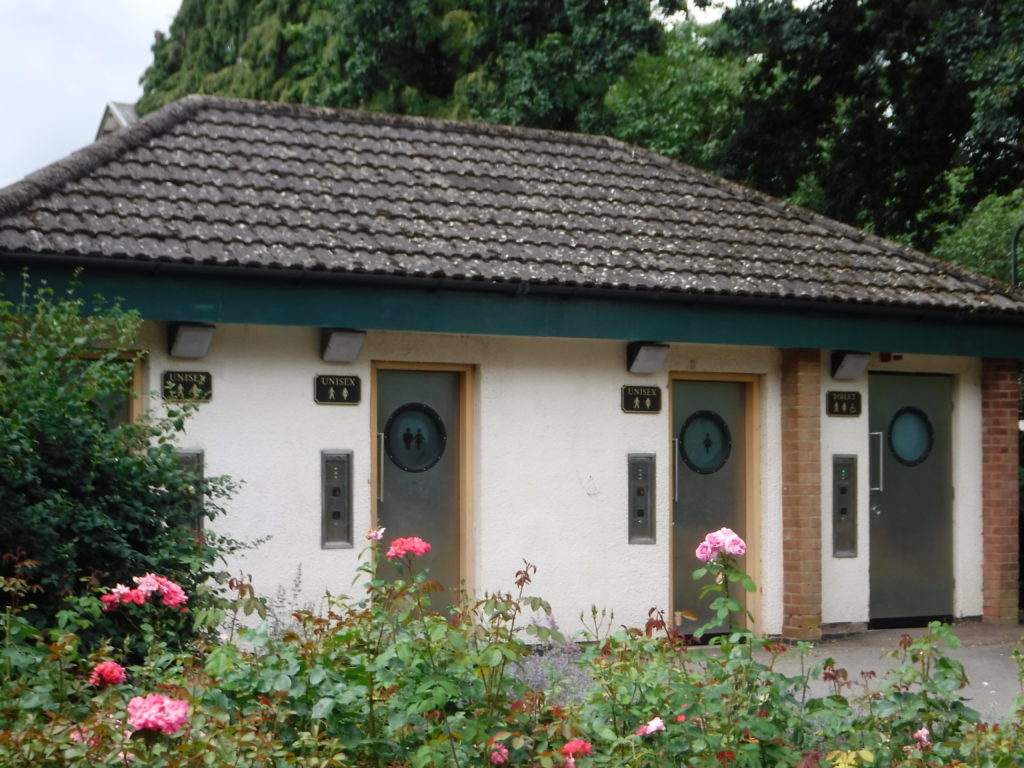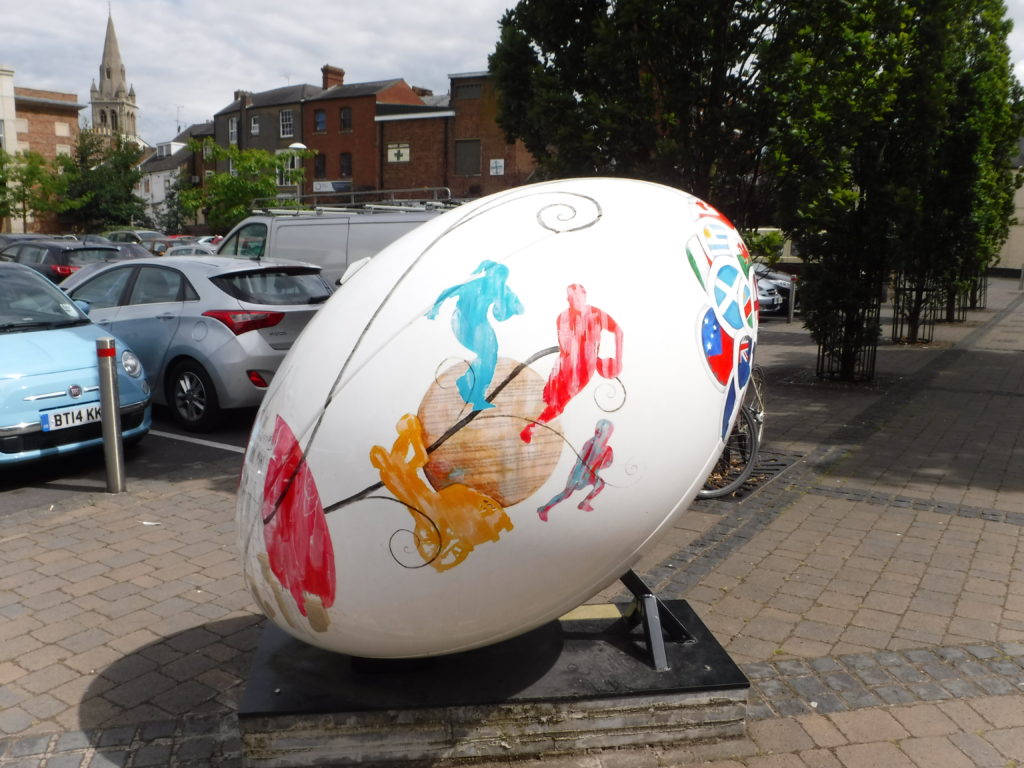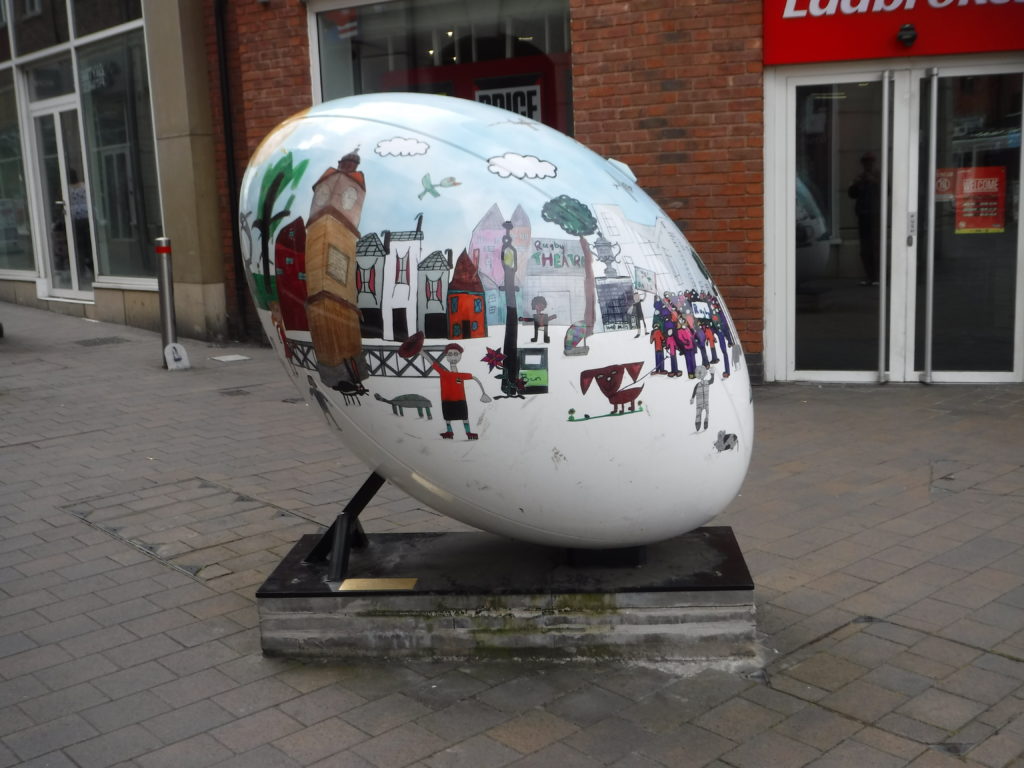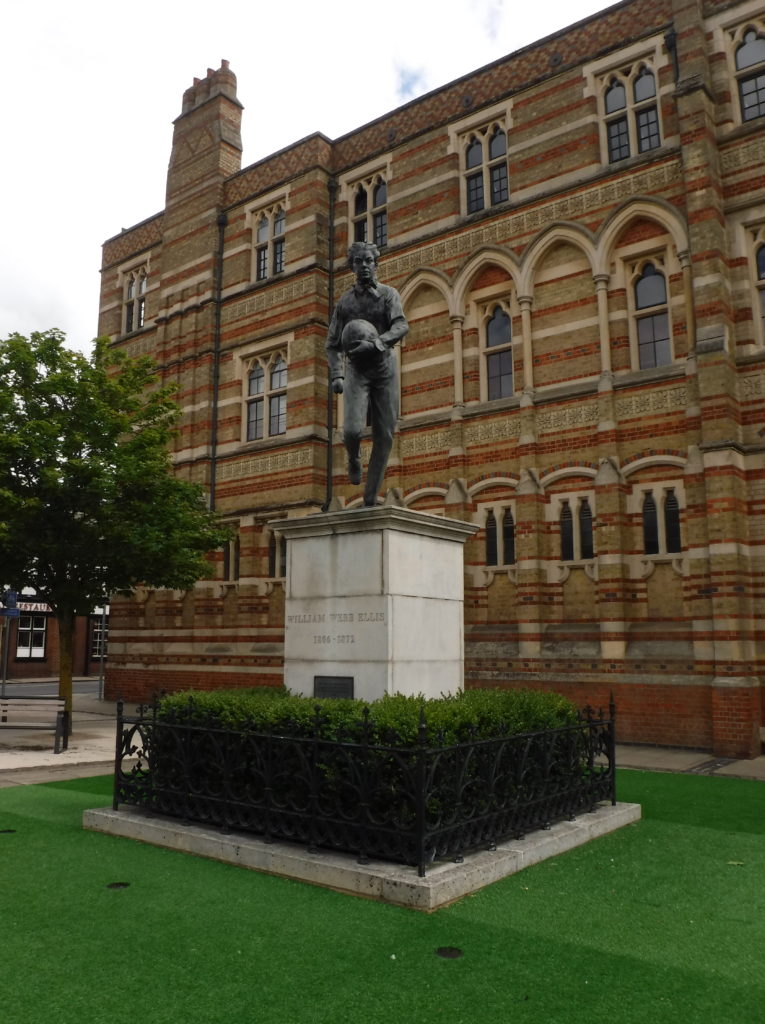The Rugby Riot
Here we are back in Rugby, this time having approached from the north. This time I made it into the town center, by a route known as The Black Path. It sounds a bit like the black death, and you can imagine carts full or corpses being dragged along it but in fact it was just called that because it used to be surfaced with cinders. It connected the homes in Rugby with the British Thompson-Houston (BTH) factory site by a singularly ugly bridge over the railway lines and a car park.

BTH is a subsidiary of General Electric. When the wooden steps up to it were redone some years ago, Rugby Council put in a ramp at their end, but GE stuck with a stairway at theirs, so the bridge was wheelchair accessible from one end only. That’s great for wheelchair using train spotters (though they would also need a periscope to see over the sides of the bridge) but not so good for actually going anywhere. Thankfully there is now a ramp at both ends.
Past the bridge I went through Caldecott Park, shaped like a pizza slice. At the crust end Pokemon Go players were dodging BMX bikers near a statue of an ejaculating tuba…

and at the pointy end where the cheese should be dripping off the bathrooms are proudly unisex.

Nice park.
As I mentioned the last time we are hear, the town is insanely proud of the invention of the game of rugby. The place is littered with huge decorated rugby balls…



and the pavement has plaques with the names of famous rugby players, with commercials for cement.

Of course, there is a statue of the kid who first picked up a ball in a game that was supposed to be about kicking it.

There he is on a plinth afloat in a sea of astroturf, in front of a building that looks like the bastard offspring of the Royal Albert Hall and Saint Pancras Station, but is actually probably part of Rugby School.
You may think that a school would not actually encourage its students to play a game that involves equal parts of brutal violence and wallowing in mud, but apparently the authorities considered this better than the alternative. In 1787, a local shopkeeper had his windows broken by pupils of the school. When the headmaster demanded that the fifth and sixth forms (15 to 18 year olds) pay for replacements, the pupils blew open the door of the headmaster’s study with gunpowder, and burned all his books and furniture. The rioters then retreated to a moated mound on the school grounds.
The rest of the staff were away for the weekend, so the headmaster appealed for help to a group of army recruiters who were in town, along with some local horse dealers. The headmaster then read the riot act to the errant students. That is, he read a notice from a piece of legislation called An Act for preventing tumults and riotous assemblies, and for the more speedy and effectual punishing the rioters. If the riot act was read by the appropriate authorities to any group of twelve people and they did not disperse within one hour, they were guilty of a felony punishable by death. The Riot Act was passed in 1715, and not repealed until 1965, but this is the last time anyone actually attempted to use it.
Well, not really. It was just a diversionary tactic. While the headmaster was reading the riot act on one side of the mound, his gang of enforcers were wading through the moat on the other side, and attacked the students from behind with horsewhips. So ended the great Rugby Riot. The ringleaders were expelled, the rest of the boys were caned, and violent sports were encouraged after that as a way for the students to let off steam without the use of explosives or arson.
One thought on “The Rugby Riot”
Actually, it was not the last time anyone read the riot act in earnest, but Rugby School likes to claim that because the later times it was read to members of the lower classes so that don’t count.